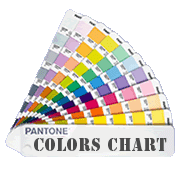Beanie is the name for two distinct types of cap or hat. The name "beanie" probably comes from the early-20th century slang term "bean," meaning "head".
The beanie cap is typically made of wool felt, and was popular amongst school age boys from the 1920s to the early 1940s. Beanies are brimless and either have a small embellished visor or, more commonly, no visor at all.
One popular style of the beanie during the early half of the twentieth century was a skullcap made of four or six felt panels sewn together to form the cap. The panels were often composed of two or more different colors to make them novel. This type of beanie was also very popular with college fraternities as they would often incorporate school colors into the beanie.
Another style of beanie was a formed and pressed wool hat with a flipped up brim that formed a band around the bottom of the cap. The band would often have a decorative repeating zig-zag or scalloped pattern cut around the edge. It was also quite common for schoolboys to adorn their beanies with buttons and pins.
By the mid 1940s, beanies fell out of popularity as a hat in favor of cotton visored caps like the baseball cap although in the 1950s and possibly beyond, they were worn by college freshmen and various fraternities as a form of mild hazing.
In the early 1990s, the beanie saw a reemergence in popularity due to the "grunge" clothing trend as well as the popularization of snowboarding and other cold weather sports activities. The modern beanie is usually made of fleece, or special synthetic material that wicks moisture away. Woven versions, resembling tobogganing caps, are also popular sportswear accessories for winter sports -- such as snowboarding.
As one travels north into colder climates the beanie swings away from the 'form' it favors in the south to the 'function' of the north. In areas such as Canada and the northern states it is more functional and the popular name changes to tuque.























